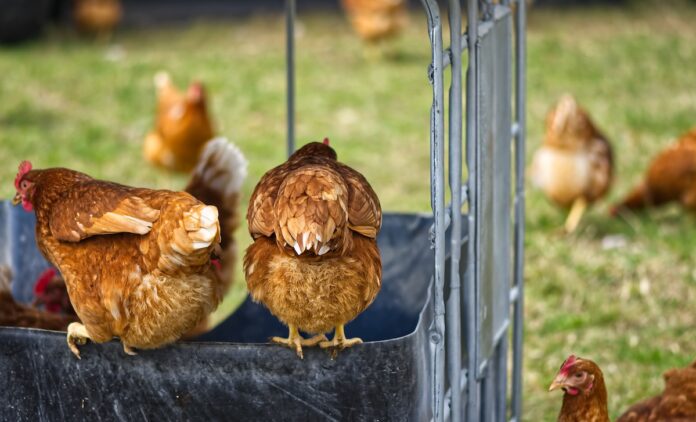
Adding probiotic Bacillus licheniformis DSM 28710 to layer diets was shown to improve layer performance, both in commercial as well as in research conditions. This was confirmed in a recently conducted experiment in laying hens. Addition of the probiotic significantly improved egg production, without increasing average daily feed intake. This is in line with the available peer-reviewed literature regarding probiotics and their beneficial effect on animal performance, indicating their relevance in modern animal production. Probiotics can be applied as an important management tool to secure healthy animals, and thus improve production performance.
W. Van Der Veken, V. Hautekiet, R. Serwata – Huvepharma, Antwerp, Belgium
Introduction
The importance of the microbiota and general gut health, in relation to animal health and thus performance, cannot be underestimated. This has led to the development of management tools to influence and support the gut microbiota, as well as gut health in general. Probiotics, defined by the FAO/WHO (2002) as “live microorganisms which when administered in adequate amounts confer a health benefit on the host”, are a good example thereof. Specifically of interest is the probiotic Bacillus licheniformis strain DSM 28710. The specific strain has previously shown efficacy in poultry, including broilers and turkeys. In these species, the probiotic strain was able to improve the general technical performance. This was achieved by mitigating challenges such as pathogens and stress situations, whilst supporting general gut health. These observations were highlighted by a variety of investigated beneficial effects, ranging from improvements of microbiota compositions and gut morphology to digestion efficiency and mortality percentages. To evaluate the efficacy of the probiotic strain in layers, an independent research trial was conducted, supplementing dietary Bacillus licheniformis DSM 28710 to birds in lay.
Method
The trial was carried out at the experimental centre of Roslin Nutrition (Scotland), using 768 laying hens (Hy-line Brown) randomly allocated to the treatments. In the set-up, 192 cages were used in total, resulting in 96 cages per treatment with four birds per cage. The trial ran for a duration of 168 days, equal to 24 weeks (from week 21 to 45 posthatch). Treatments consisted of a control group fed a commercial basal diet and a B. licheniformis DSM 28710 (B-Act®, Huvepharma®) group, fed the same commercial basal diet but supplemented with 1.6×1012 CFU B. licheniformis DSM 28710 per metric ton of feed. To evaluate the impact of the strain on technical performance, the following parameters were assessed during the trial period (week of age 21 to 45): average daily feed intake (ADFI, g/hen/day), egg production (expressed as percentage, amount of eggs per day/hens on that day) and egg numbers (total eggs/cage) were measured and reported on a four-weekly basis, with the first measurements taken in week of age 21.
Results
Egg production for the probiotic group was significantly better, with a percentage of 93.9% versus the control’s 92.5% (evaluated over the whole trial period; P=0.007). This was reflected in egg numbers, being significantly greater in birds supplemented with B. licheniformis DSM 28710: 630.9 eggs versus the control’s 621.8 (total number of eggs/cage over the 168 days; P=0.01). These results were achieved without an increase in ADFI: control animals consumed 123.2 g of feed per hen per day, with the animals supplemented with the probiotic consuming a comparable 123.4 g of feed per hen per day (P=0.48).
Discussion
The above results are in line with previously conducted animal studies, where the same probiotic DSM 28710 strain was supplemented to layers as well as other poultry. In addition to the beneficial effects on performance, it was recorded that manure nitrogen significantly decreased in these trials whilst litter quality improved (P<0.05; internal research). The reduced manure nitrogen is indicative of enhanced protein digestibility, with improved litter quality linking back to general gut health status. Although the precise probiotic mode of action was not evaluated in the trial at hand, the observations mentioned above might offer a potential explanation for the noted improvements in performance. The peer-reviewed literature has also described multiple potential mode of actions for probiotics, one of which being the improvement of general gut health (Simon et al., 2001; Deng et al., 2012). This includes, but is not limited to, an improved utilisation of ingested feed, which in turn has a positive impact on performance.
In the trial at hand, egg production increased in the probiotic treatment group, but average daily feed intake remained the same when compared to the control. It thus makes sense to follow the same logic here regarding improvement of performance by improving feed utilisation, as already explained in the general peer-reviewed literature. The improved performance recorded in this trial can be considered an indirect effect of a more efficient feed utilisation, thanks to the probiotic supplementation. Although the exact mode of action was not investigated into detail here, the potential of Bacillus licheniformis DSM 28710 to support layer performance is clear. The probiotic should thus be considered in the overall feed management plan, supporting the animals and final productivity.
References

















